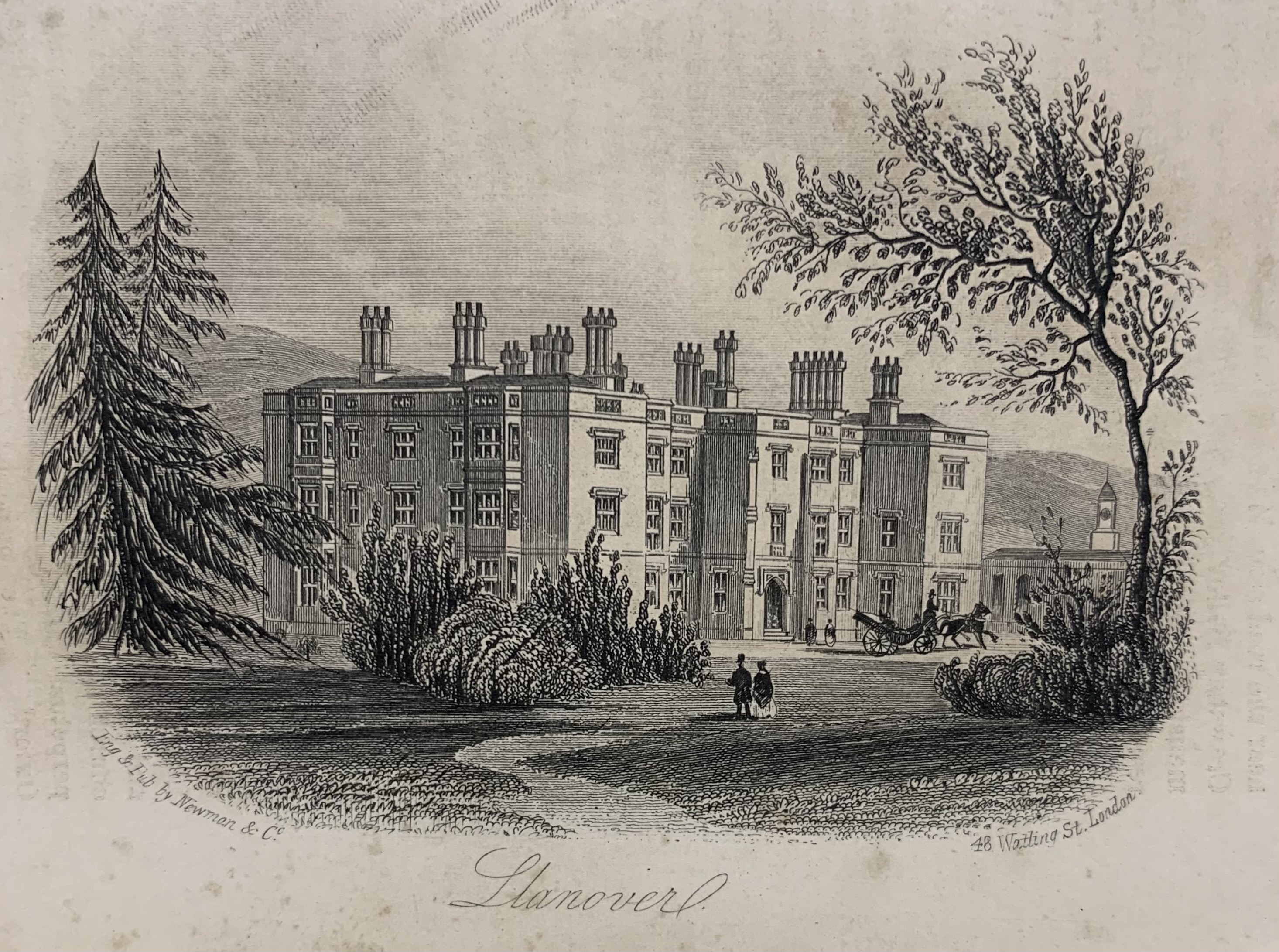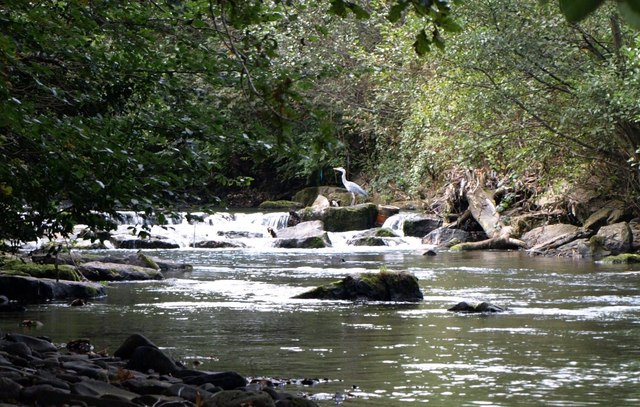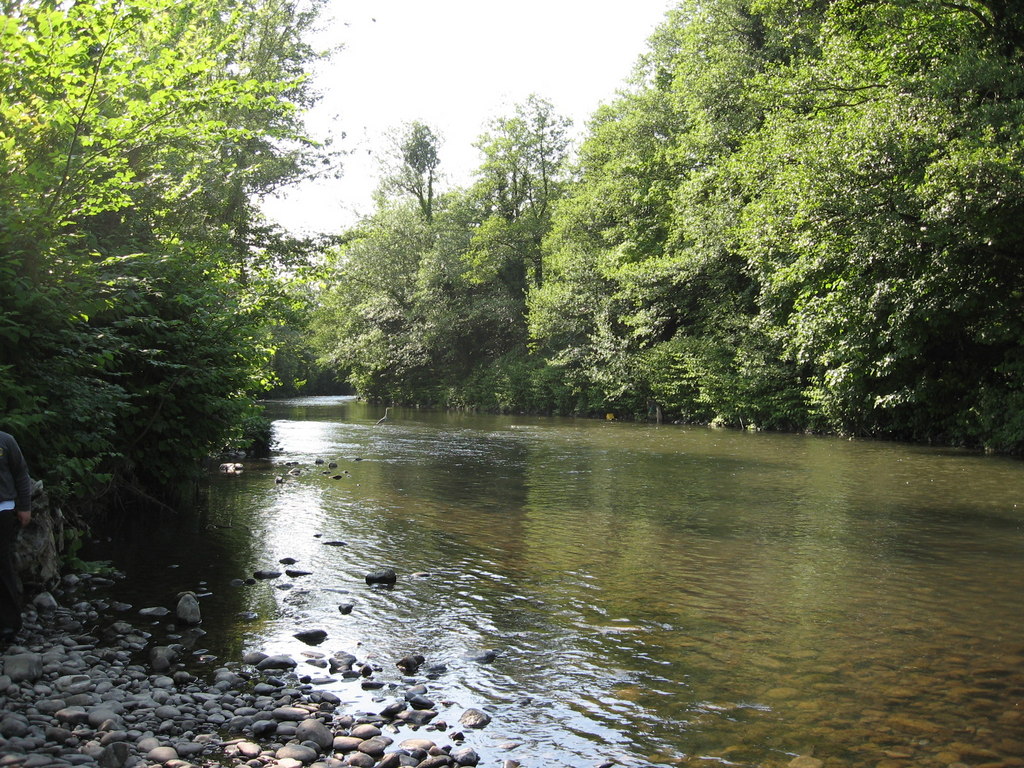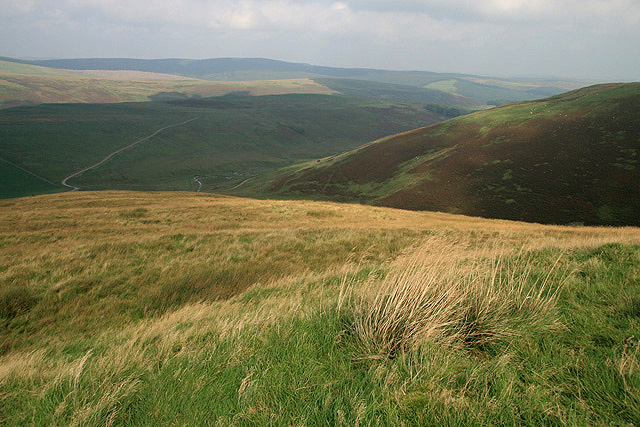|
Cuisine Of Monmouthshire
The cuisine of Monmouthshire is historically associated with Lady Augusta Hall, who was also known as Lady Llanover. Lady Llanover published one of the first Welsh cookery books called ''First Principles of Good Cookery''. The book uses a fictional Welsh hermit to give culinary advice to a visiting guest who is travelling though Wales. The book's historical significance was noted by Bobby Freeman who, in 1991, arranged for the book to be republished by the Brefi Press together with an introduction explaining its historical significance and the background of Lady Llanover's life. Lady Llanover championed Welsh cuisine in the kitchens of her home at Llanover Hall and during her lifetime was famous for her hospitality, where the following motto hung above the dining room: Da i bawb cynhildeb yw A thad i gyfoeth ydyw Thrift is beneficial to all And is the father of wealth Gilli Davies notes that although some of the recipes in ''First Principles of Good Cookery'' may have a We ... [...More Info...] [...Related Items...] OR: [Wikipedia] [Google] [Baidu] |
Wentlooge
Wentlooge ( cy, Gwynllŵg), sometimes known as Wentloog, is a community in the southwest of the city of Newport, South Wales, in the Marshfield ward. The community includes Peterstone Wentloodge and St. Brides Wentloodge and in 2011 had a population of 737. Description The name Wentlooge is a corruption of the earlier name Gwynllŵg, said to have been named after Gwynllyw, its 5th - 6th century ruler. The community is bounded by Percoed reen to the northwest, the Ebbw River to the northeast, the Bristol Channel to the southeast and the South Wales Main Line to the southwest. It contains the hamlets of St Brides Wentloog and Peterstone Wentloog.Wentlooge Community Council Wentlooge Community Council homepage. Retrieved 18 March 2016. The |
Stew
A stew is a combination of solid food ingredients that have been cooked in liquid and served in the resultant gravy. A stew needs to have raw ingredients added to the gravy. Ingredients in a stew can include any combination of vegetables and may include meat, especially tougher meats suitable for slow-cooking, such as beef, pork, lamb, poultry, sausages, and seafood. While water can be used as the stew-cooking liquid, stock is also common. A small amount of red wine is sometimes added for flavour. Seasoning and flavourings may also be added. Stews are typically cooked at a relatively low temperature (simmered, not boiled), allowing flavours to mingle. Stewing is suitable for the least tender cuts of meat that become tender and juicy with the slow moist heat method. This makes it popular in low-cost cooking. Cuts having a certain amount of marbling and gelatinous connective tissue give moist, juicy stews, while lean meat may easily become dry. Stews are thickened by reduction ... [...More Info...] [...Related Items...] OR: [Wikipedia] [Google] [Baidu] |
Lamb And Mutton
Lamb, hogget, and mutton, generically sheep meat, are the meat of domestic sheep, ''Ovis aries''. A sheep in its first year is a lamb and its meat is also lamb. The meat from sheep in their second year is hogget. Older sheep meat is mutton. Generally, "hogget" and "sheep meat" are not used by consumers outside Norway, New Zealand, South Africa, Scotland and Australia. Hogget has become more common in England, particularly in the North (Lancashire and Yorkshire) often in association with rare breed and organic farming. In South Asian and Caribbean cuisine, "mutton" often means goat meat.''Oxford English Dictionary'', 3rd edition, June 2003''s.v.'',_definition_1b_At_various_times_and_places,_"mutton"_or_"goat_mutton"_has_occasionally_been_used_to_mean_goat_meat. Lamb_is_the_most_expensive_of_the_three_types_and_in_recent_decades_sheep_meat_is_increasingly_only_retailed_as_"lamb",_sometimes_stretching_the_accepted_distinctions_given_above._The_stronger-tasting_mutton_is_now_hard ... [...More Info...] [...Related Items...] OR: [Wikipedia] [Google] [Baidu] |
Food Marketing
Food marketing brings together the food producer and the consumer through a chain of marketing activities. Background Pomeranz & Adler, 2015, defines food marketing as a chain of marketing activities that takes place within the food system between a food organisation and the consumer. This has the potential to be a complicated procedure, as there are many processes that are used prior to the sale the food product. These include food processing, wholesaling, retailing, food service and transport. Due to these many processes, a multitude of organisations have to be involved in the sale of one food product. For example, approximately fifty-six organisations are involved in the making of one can of chicken noodle soup. These organisations not only include the processors who make the ingredients for the product, but also involve the companies who manufacture the cans, print the labels and transport the product. Therefore, on a global scale, the food marketing industry is one of th ... [...More Info...] [...Related Items...] OR: [Wikipedia] [Google] [Baidu] |
Organic Farming
Organic farming, also known as ecological farming or biological farming,Labelling, article 30 o''Regulation (EU) 2018/848 of the European Parliament and of the Council of 30 May 2018 on organic production and labelling of organic products and repealing Council Regulation (EC) No 834/2007.''/ref> is an agricultural system that uses fertilizers of organic origin such as compost manure, green manure, and bone meal and places emphasis on techniques such as crop rotation and companion planting. It originated early in the 20th century in reaction to rapidly changing farming practices. Certified organic agriculture accounts for globally, with over half of that total in Australia. Organic farming continues to be developed by various organizations today. Biological pest control, mixed cropping and the fostering of insect predators are encouraged. Organic standards are designed to allow the use of naturally-occurring substances while prohibiting or strictly limiting synthetic substances. ... [...More Info...] [...Related Items...] OR: [Wikipedia] [Google] [Baidu] |
Horticulture
Horticulture is the branch of agriculture that deals with the art, science, technology, and business of plant cultivation. It includes the cultivation of fruits, vegetables, nuts, seeds, herbs, sprouts, mushrooms, algae, flowers, seaweeds and non-food crops such as grass and ornamental trees and plants. It also includes plant conservation, landscape restoration, landscape and garden design, construction, and maintenance, and arboriculture, ornamental trees and lawns. The study and practice of horticulture have been traced back thousands of years. Horticulture contributed to the transition from nomadic human communities to sedentary, or semi-sedentary, horticultural communities.von Hagen, V.W. (1957) The Ancient Sun Kingdoms Of The Americas. Ohio: The World Publishing Company Horticulture is divided into several categories which focus on the cultivation and processing of different types of plants and food items for specific purposes. In order to conserve the science of horticultur ... [...More Info...] [...Related Items...] OR: [Wikipedia] [Google] [Baidu] |
Viticulture
Viticulture (from the Latin word for ''vine'') or winegrowing (wine growing) is the cultivation and harvesting of grapes. It is a branch of the science of horticulture. While the native territory of ''Vitis vinifera'', the common grape vine, ranges from Western Europe to the Iran, Persian shores of the Caspian Sea, the vine has demonstrated high levels of adaptability to new environments, hence viticulture can be found on every continent except Antarctica. Duties of the viticulturist include monitoring and controlling Pest (organism), pests and Plant pathology, diseases, fertilizer, fertilizing, irrigation (wine), irrigation, canopy (grape), canopy Glossary of viticultural terms#Canopy management, management, monitoring fruit development and Typicity, characteristics, deciding when to harvest (wine), harvest, and vine pruning during the winter months. Viticulturists are often intimately involved with winemakers, because vineyard management and the resulting grape characteristics ... [...More Info...] [...Related Items...] OR: [Wikipedia] [Google] [Baidu] |
Black Mountains, Wales
The Black Mountains ( cy, Y Mynydd Du or sometimes ) are a group of hills spread across parts of Powys and Monmouthshire in southeast Wales, and extending across the England–Wales border into Herefordshire. They are the easternmost of the four ranges of hills that comprise the Brecon Beacons National Park, and are frequently confused with the westernmost, which is known as the Black Mountain. The Black Mountains may be roughly defined as those hills contained within a triangle defined by the towns of Abergavenny in the southeast, Hay-on-Wye in the north and the village of Llangors in the west. Other gateway towns to the Black Mountains include Talgarth and Crickhowell. The range of hills is well known to walkers and ramblers for the ease of access and views from the many ridge trails, such as that on the Black Hill (Herefordshire) at the eastern edge of the massif. The range includes the highest public road in Wales at Gospel Pass, and the highest point in southern England ... [...More Info...] [...Related Items...] OR: [Wikipedia] [Google] [Baidu] |
Sirhowy River
The Sirhowy River (Welsh language : ''Afon Sirhywi'') is a river in Wales and a tributary of the Ebbw River. Sources The Sirhowy River has its source on the slopes of Cefn Pyllau-duon above Tredegar. After flowing through Siôn-Sieffre's Reservoir it turns south through Tredegar and then Blackwood and Pontllanfraith. It turns eastwards near Cwmfelinfach and joins the River Ebbw near Crosskeys Crosskeys ( cy, Pont-y-cymer) is a village, community and an electoral ward in Caerphilly county borough in Wales. Etymology The village was originally named Pont-y-cymer and this remains the official Welsh name for the village. The name mea .... External links The confluence of the Sirhowy and the Ebbw at Crosskeys: photograph from the Crosskeys websitewww.geograph.co.uk : photo of the Sirhowy River Rivers of Blaenau Gwent Rivers of Caerphilly County Borough {{Wales-river-stub ... [...More Info...] [...Related Items...] OR: [Wikipedia] [Google] [Baidu] |
Ebbw River
The Ebbw River (; cy, Afon Ebwy) is a river in South Wales which gives its name to the town of Ebbw Vale. The Ebbw River is joined by the Ebbw Fach River (Welsh: Afon Ebwy Fach meaning 'little Ebbw river') at Aberbeeg. The Ebbw Fach is itself fed by a left-bank tributary, the River Tyleri. The tributary Sirhowy River joins on the right bank at Crosskeys, then the river continues flowing south east, through the town of Risca, then through the western suburbs of Newport, alongside Tredegar Park. The tidal Ebbw joins with the estuarine River Usk seaward of Newport, before flowing into the Mouth of the Severn. In common with the nearby Sirhowy River and Rhymney River The Rhymney River ( cy, Afon Rhymni) is a river in the Rhymney Valley, South Wales, flowing through Cardiff into the Severn Estuary. The river formed the boundary between the historic counties of Glamorgan and Monmouthshire until in 1887, t ... the correct English name for the river is "Ebbw River", not the m ... [...More Info...] [...Related Items...] OR: [Wikipedia] [Google] [Baidu] |
Hill Farming
Hill farming or terrace farming is an extensive farming in upland areas, primarily rearing sheep, although historically cattle were often reared extensively in upland areas. Fell farming is the farming of fells, a fell being an area of uncultivated high ground used as common grazing. It is a term commonly used in Northern England, especially in the Lake District and the Pennine Dales. Elsewhere, the terms ''hill farming'' or pastoral farming are more commonly used. Cattle farming in the hills is usually restricted by a scarcity of winter fodder, and hill sheep, grazing at about two hectares per head, are often taken to lowland areas for fattening. Modern hill farming is often heavily dependent on state subsidy, for example in the United Kingdom it received support from the European Union's Common Agricultural Policy. Improved, sown pasture and drained moorland can be stocked more heavily, at approximately one sheep per 0.26 hectares. Hill farming location and organization ... [...More Info...] [...Related Items...] OR: [Wikipedia] [Google] [Baidu] |

.jpg)
.jpg)






